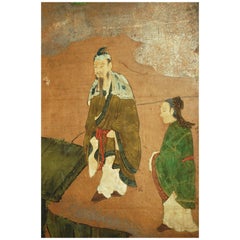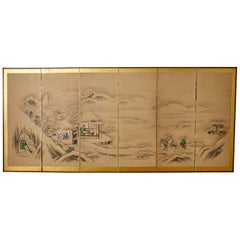Australia - Asian Art and Furniture
18th Century Japanese Antique Australia - Asian Art and Furniture
Silver Leaf
19th Century Japanese Meiji Antique Australia - Asian Art and Furniture
Metal
Mid-19th Century Asian Edo Antique Australia - Asian Art and Furniture
Silk
19th Century Japanese Meiji Antique Australia - Asian Art and Furniture
Brass, Gold Leaf
Mid-19th Century Asian Edo Antique Australia - Asian Art and Furniture
Silk
19th Century Japanese Edo Antique Australia - Asian Art and Furniture
Brass, Gold Leaf
1690s Japanese Edo Antique Australia - Asian Art and Furniture
Gold Leaf
Mid-19th Century Asian Edo Antique Australia - Asian Art and Furniture
Silk
Mid-18th Century Japanese Edo Antique Australia - Asian Art and Furniture
Gold Leaf
Mid-19th Century Asian Edo Antique Australia - Asian Art and Furniture
Silk
17th Century Japanese Edo Antique Australia - Asian Art and Furniture
Wood, Paper
Early 20th Century Japanese Showa Australia - Asian Art and Furniture
Gold Leaf
Mid-19th Century Asian Edo Antique Australia - Asian Art and Furniture
Silk
1920s Japanese Taisho Vintage Australia - Asian Art and Furniture
Silver, Bronze
Read More
Chicago’s Pagoda Red Has a Spirited Mix of Asian Antiques and Bold New Art
For 25 years, gallerist Betsy Nathan has leveraged her keen eye and key connections to bring a unique selection of rare finds to the market.
In L.A., Gallerist JF Chen Has Long Championed Eclectic Blue-Chip Design
Now working alongside his daughter Bianca, dealer Joel Chen has presented a most covetable array of antiques, art and contemporary creations for more than 40 years.
12 Calming Spaces Inspired by Japanese Design
From cherry-blossom-adorned walls paired with glamorous lighting to wood-paneled ceilings above checkerboard-patterned chairs, these 12 spaces seamlessly blend Eastern and Western aesthetics.
Rodrigo Rivero Lake’s Mexico City Showroom Is a Museum-Worthy Trove of Spanish Colonial and Asian Antiques
The dealer and curator has spent the past 50 years amassing a collection of exceptional art, furniture and architectural elements that trace the cultural influence of the Spanish empire from Europe to the Americas and beyond.
16 Refined Asian-Inspired Interiors
These spaces exemplify how Eastern elements elevate a home's decor.



